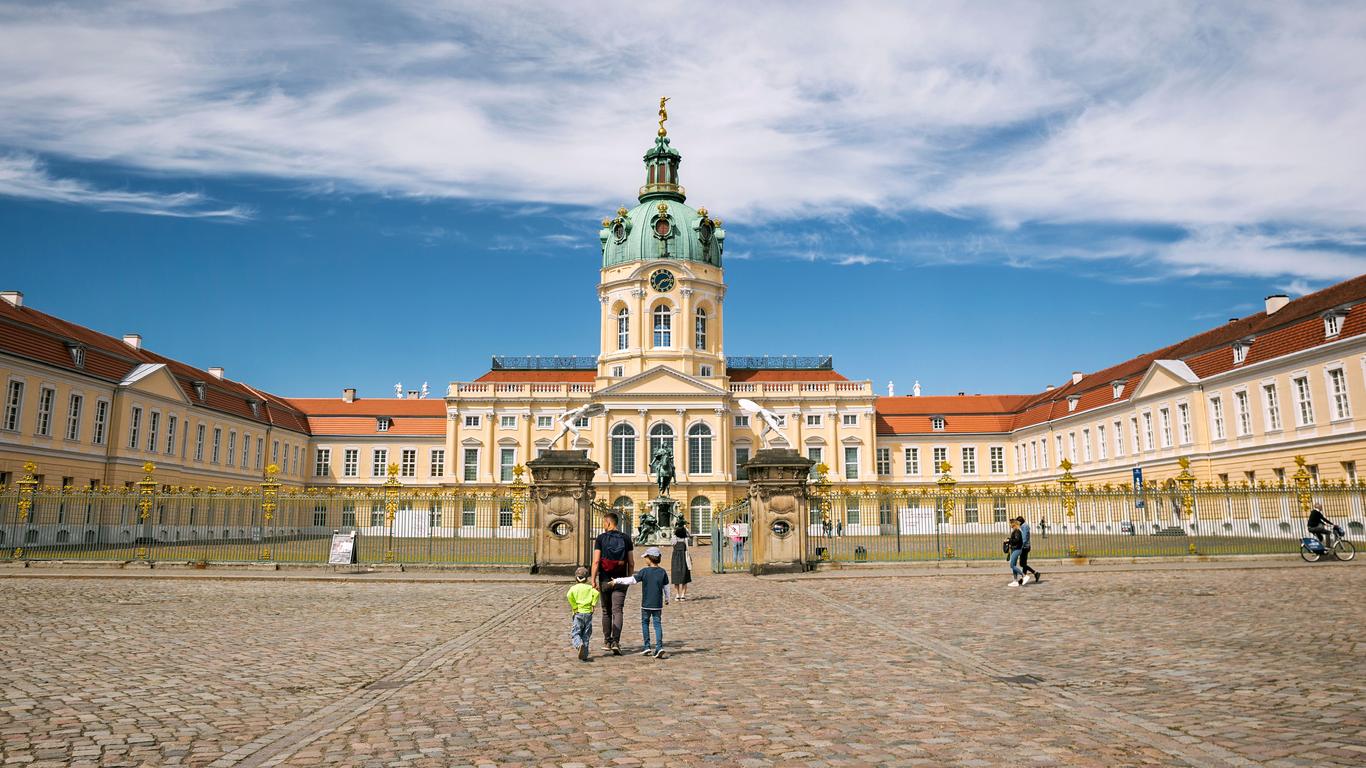Charlottenburg is an upscale neighbourhood where you can dine at trendy cafes, shop at high-end boutiques and visit one of the most beautiful palaces in Germany. Hit up one of the busiest nightlife districts in Berlin and visit a historic church reimagined as an anti-war memorial.
Things to do in Charlottenburg
Stroll along tree-lined Kurfürstendamm and browse upmarket boutiques and department stores. The boulevard is known as the “Champs-Élysées of Berlin” and is one of the city’s most coveted shopping destinations. Cafes and bistros spill onto the sidewalk and create a village-style atmosphere.
Kaiser Wilhelm Memorial Church towers over Charlottenburg and combines elements of historic and modern architecture. After being heavily bombed in the 1940s the church was reimagined as a poignant antiwar memorial. Walk through the glass-walled Hall of Worship and admire original religious relics in the Hall of Remembrance.
Be amazed by the Rococo grandeur of Charlottenburg Palace. The former royal summer residence features lavish apartments decorated with antiques, oil paintings and silk tapestries. Admire royal portraits in the Oak Gallery and peer into magnificent apartments used by German kings and queens. The gardens are stunning and feature shady paths, emerald-green lawns and picturesque ponds.
Rub shoulders with artists, students and musicians in Savignyplatz. The plaza is one of the most popular nightlife districts in Berlin and is lined with bars, restaurants and live music venues. Enjoy everything from jazz and blues to electro and house.
Getting around Charlottenburg
Charlottenburg is pedestrian-friendly and easy to get around on foot. The neighbourhood is serviced by several Berlin U-Bahn stations, as well as S-Bahn train stations. Drive to the Berlin city centre in 15 minutes or ride the train in 20 minutes. Berlin Brandenburg Airport is a 30-minute drive away.





